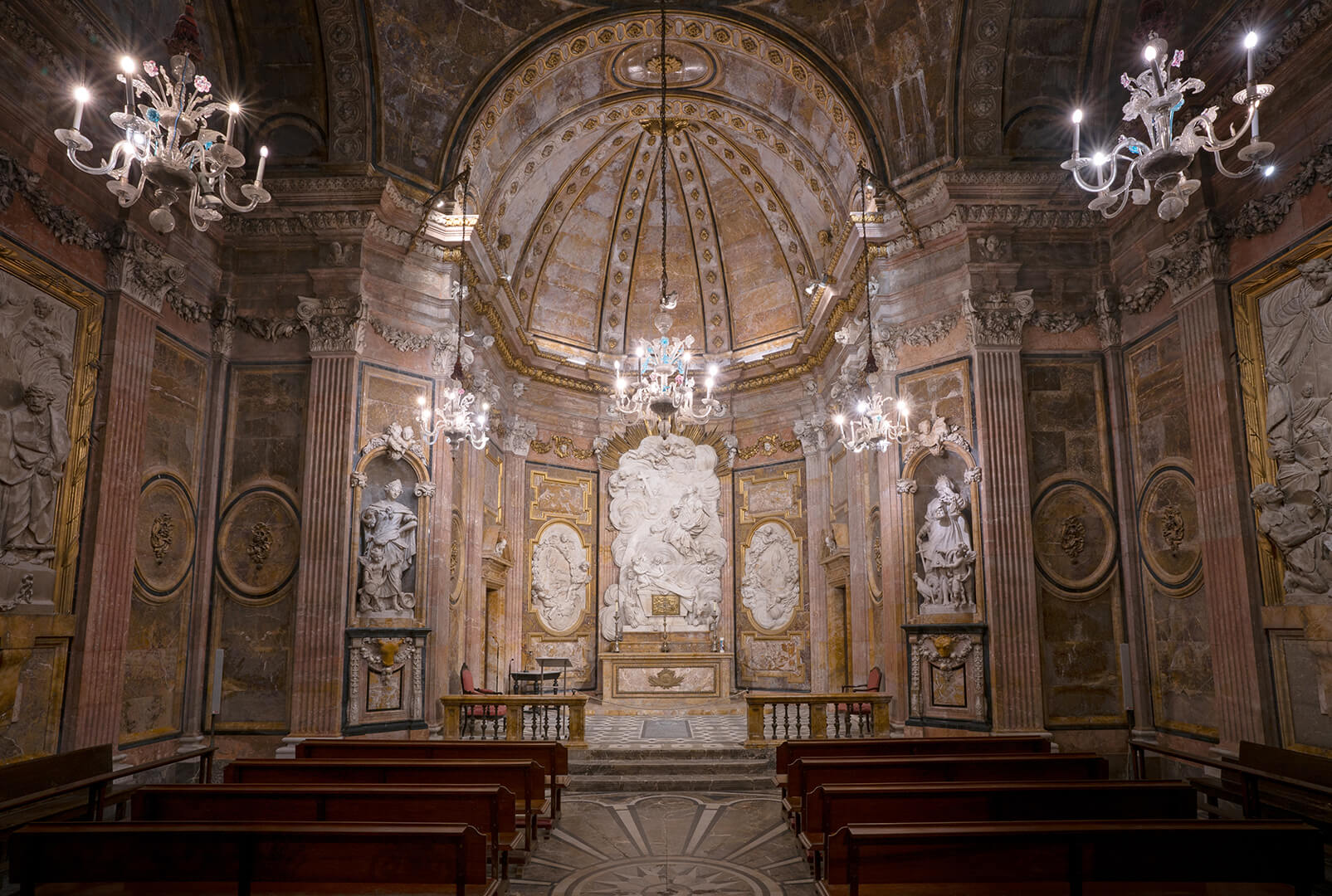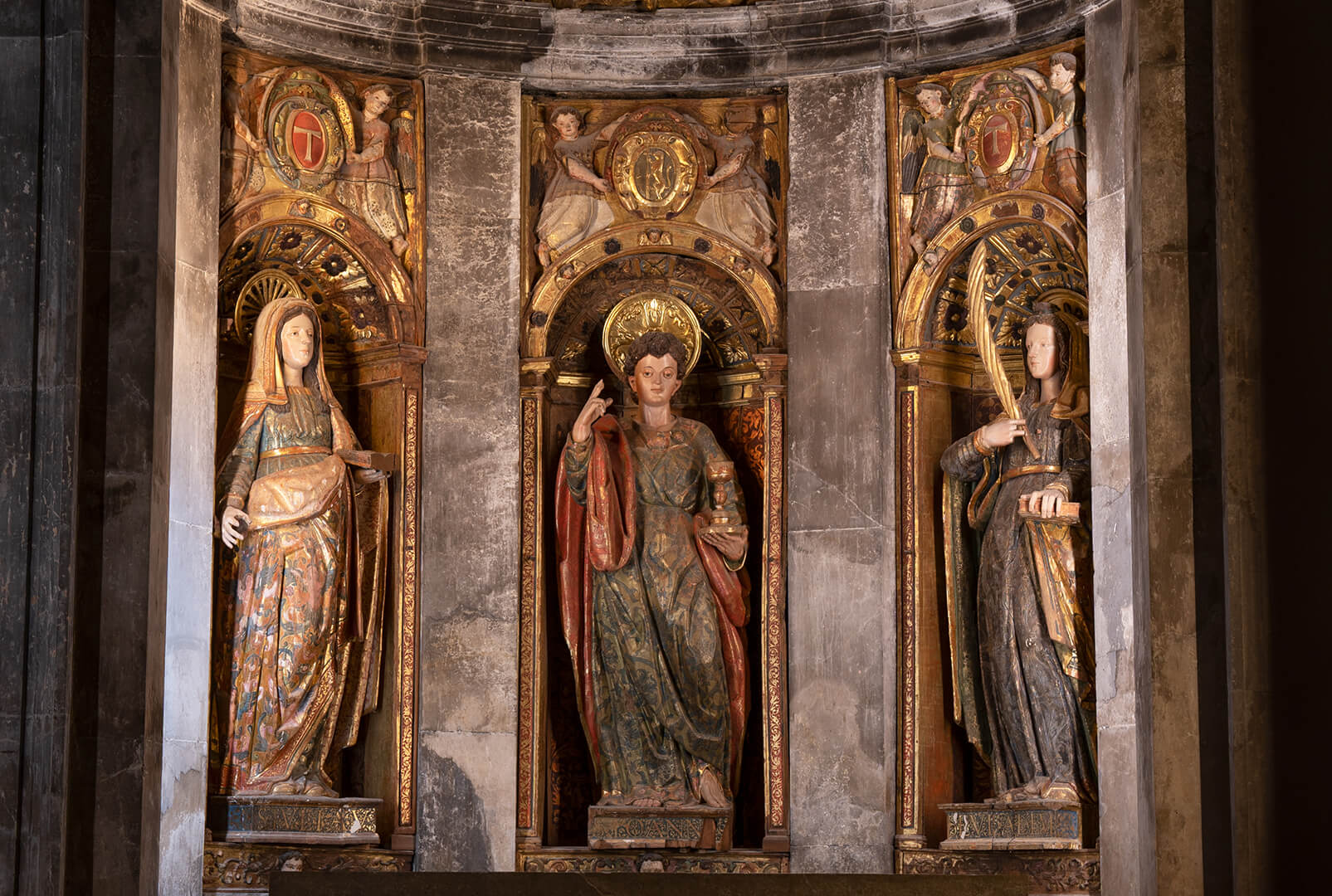Outstanding chapels
Highlights of the Cathedral / Outstanding chapels
Chapel of Saint Thecla
Conceived as a temple with a central cruciform floor plan and a large dome. It was built between 1760 and 1775 in honour of Saint Thecla of Iconium, patron saint of Tarragona, in order to guard the relic of the saint's arm. Baroque-Classicist style predominates in the chapel, in both the work of the architect Josep Prat and the sculptor Carles Salas. The chapel is covered with jasper, marble and other precious materials that frame three large bas-reliefs with scenes from the life of Saint Thecla on the sides and her glorification in the centre, beneath which is the gilded reliquary containing the Saint’s arm, highly venerated by the people of Tarragona.
Chapel of the Immaculate Conception
An example of the most ornate Baroque style, it has a cruciform floor plan, hemispherical dome and apsidal chancel. It was built by Canon Diego Girón de Rebolledo as a family pantheon and designed in 1674 by Friar Josep de la Concepció.
The space was conceived as a total work of art in which architecture, sculpture and painting converged and interacted, involving the best Catalan artists of the time. The construction was directed by the master builders Francesc Portella, father and son, and Joan Costas. Francesc Grau and Domènec Rovira el Jove were in charge of the sculptural decoration of the magnificent Solomonic and gilded altarpiece, as well as the tombs of the founder and his family, representing theological virtues and the liberal arts. The painting was the work of Francesc Tramulles and Josep Juncosa, who created a cycle dedicated to scenes from the life of the Virgin Mary, to whom the chapel is dedicated.
Chapels of St. Fructuosus and St. John the Evangelist
These twin chapels were built in 1592 at the expense of the Archbishop of Tarragona and Viceroy of Catalonia, Joan Terès i Borrull. Designed, like the neighbouring Chapel of the Holy Sacrament, by the great Renaissance architect Pere Blai, they house, in an arcosolium opened in the wall between the two spaces, the sumptuous mausoleum of the founding Archbishop, designed by Blai himself based on the Bramante shrine of San Pietro in Monterio, and carved by Isaac Alfard Verme and Agustí Bennàsser. The small apse of the right-hand chapel contains the images of Saint John the Evangelist, Saint Julia and Saint Eulalia, the work of Bennàsser himself and Benet Baró, whilst the left-hand chapel houses three sculptures by Baró representing the three Tarragona saints of antiquity who were martyred, Bishop Fructuosus and the deacons Augurius and Eulogius, who under Emperor Valerian, on 21 January 259, were condemned to be burnt at the stake in the amphitheatre of Tarraco. The altar contains some of their relics in a silver casket while the walls of the chapel are covered with modern canvases depicting scenes from the life and martyrdom of these three saints.
Under the floor of the chapel is the crypt for Archbishop Francesc d'Assís Vidal i Barraquer, a political figure of great importance in the mid-20th century. Next to it, a silver casket contains the relics of the Tarragona priests martyred during the Spanish Civil War, who were recently beatified.







